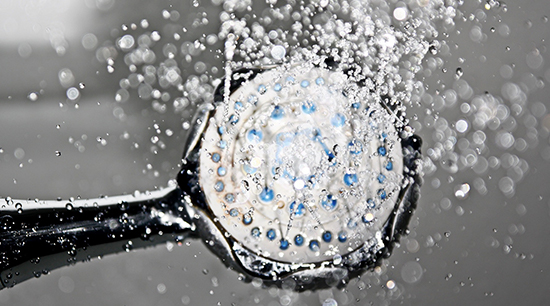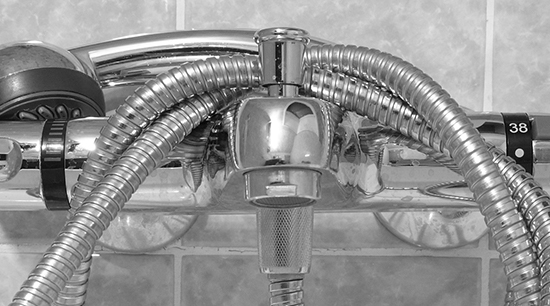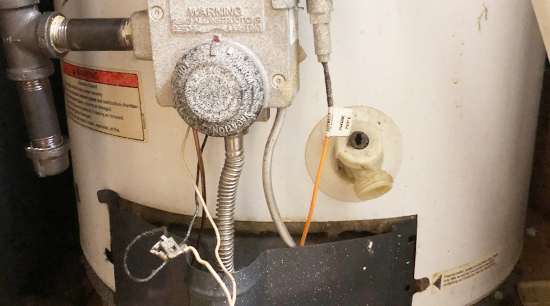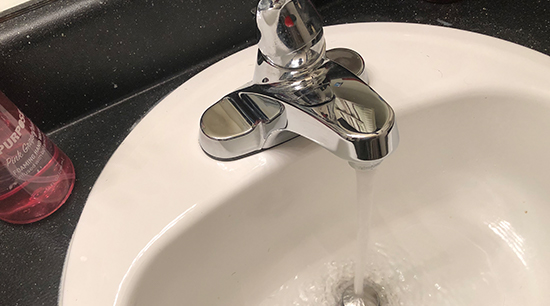How to Increase Water Pressure in Your Shower
Is your low water pressure making it a challenge to take a proper, soothing, and relaxing shower? Knowing how to increase your water pressure will help you take better, more invigorating showers.

alpharettawaterdamageremoval.com gathered information about how to increase your home’s water pressure, significantly improving your shower experience and quality.
What Causes Low Water Pressure in a Shower
Reduced or low water pressure in your shower can result from multiple issues. Consider the following easy-to-fix problems and how they are repaired:
A Clogged Showerhead – Over time, sediment buildup can clog your showerhead, causing significant water pressure loss. Before running to your local home supply retailer to buy a new one or use harsh chemicals on it, try the following solution.
Solution 1: Remove your showerhead and place it in a saucepan full of hot (not boiling) vinegar. Once the sediment buildup has dissolved, remove the showerhead, thoroughly rinse it in cool, clean water, and replace it on the shower arm.
Solution 2: Wrap a vinegar-filled bag around the arm, so the showerhead is completely submerged in the vinegar. Tie the bag to the arm with a rubber band or string so it will remain in place, and leave it there for 24 to 48 hours. Remove the bag and turn on the water.
You Have a Flow Restrictor – Water-efficiency concerns led to widespread flow restrictor use (in the 1970s and 1980s), which reduced the flow rate far below showerhead design levels, often resulting in an unacceptable, low-pressure shower.
Solution: Replace your old showerhead with a more current water-efficient model.
A Worn-Out Diverter Valve – A shower diverter, or a diverter valve, allows you to switch the water stream between different output fixtures. Over time a diverter can wear out, reducing the showerhead’s water flow.

Solution: Replace the diverter with an updated but compatible one (you may have to disassemble the faulty diverter so you can match the size and model at the hardware store).
A Loose Water Temperature Control Valve – A thermostatic shower valve blends hot and cold water to produce the ideal water temperature. If the valve isn’t working properly, your shower water might suddenly go from scorching hot to frigid or may result in reduced water pressure.
Solution: Replace the valve with a new one.
A Leaking Pipe – Leaking pipes can cause severe and abrupt water pressure loss. This issue must be resolved professionally and quickly to prevent severe structural damage.
Solution: Identify the leaking pipe’s location, then shut the water off. You can then expose the leaking pipe and fix it by splicing in a new section of pipe (or patch it with sturdy rubber, held in place with pipe clamps until your plumber can professionally repair it).
A Faulty Water Heater – Your shower’s water pressure can be adversely affected when your hot water heater starts malfunctioning. This problem may occur from an obstructed water supply to the appliance or sediment buildup/obstruction. When this happens, the cold water faucets will remain at full strength while the hot ones will lose their pressure.

Solution: Have your hot water heater professionally evaluated and serviced. Have it replaced if your water heater is severely damaged.
Multiple Taps are Open – Inadvertently leaving a faucet open in the kitchen, for the garden hose, or running a water-based appliance can drastically reduce your shower’s water pressure.

Solution: Shut off water-based appliances and close all other faucets.
Note: If the water pressure has decreased in all of your home’s faucets and water-based appliances, the problem is likely in your home’s water main. Consider the following potential culprits:
- Debris and pollutants from fractures in the water main are obstructing pipes.
- Sediment buildup has slowly clogged your pipes, causing the water pressure to go down, as the water has a narrowed travel space.
- Your home’s main shut-off valve may be partially closed.
- Your home’s pressure-reducing valve (PRV) is faulty.
- There may be a temporary problem with the municipal water supply.
Tip: If you are experiencing low water pressure throughout your home, hire a professional plumber to thoroughly inspect your home’s water main and make any needed repairs. If you determine that the issue is occurring from problems in the municipal water supply, report the problem to your city’s watershed management, water and sewer, or water utilities department.
Low Water Pressure in Your Shower
In this article, you discovered multiple reasons for your shower’s decreased water pressure and what you can do to increase it.
Identifying the source of your shower’s low water pressure will help you resolve the issue, returning your shower to a more soothing and relaxing experience.
Not knowing the cause and fix for your water pressure problem can lead to a frustrating shower and poor hygiene.
Sources:
dallasor.gov/sites/default/files/fileattachments/public_works/page/5706/water_pressure_fact_sheet.pdf
hud.gov/program_offices/public_indian_housing/programs/ph/phecc/strat_w1
flagstaff.az.gov/DocumentCenter/View/42618/DIY_Showerhead-Aerator?bidId=
academia.edu/4044574/10_Minute_Home_Repairs_More_Than_200_Fast_Effective_Fixes_You_Can_Do_Yourself
archfoundation.org/fix-shower-diverter/
(678) 505-0266
The post How to Increase Water Pressure in Your Shower appeared first on http://www.alpharettawaterdamageremoval.com

Comments
Post a Comment